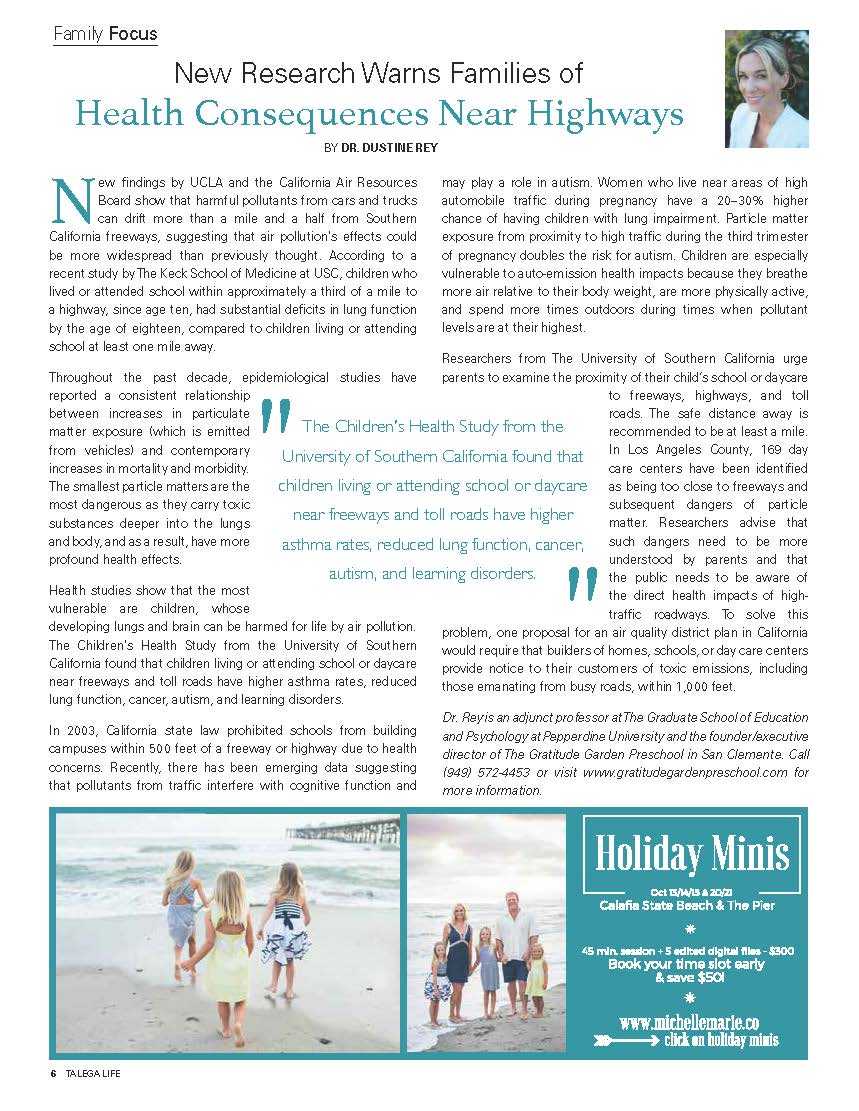New findings by UCLA and the California Air Resources Board show that harmful pollutants from cars and trucks can drift more than a mile and a half from Southern California freeways, suggesting that air pollution’s effects could be more widespread than previously thought. According to a recent study by The Keck School of Medicine at USC, children who lived or attended school within approximately a third of a mile to a highway, since age ten, had substantial deficits in lung function by the age of eighteen, compared to children living or attending school at least one mile away.
Throughout the past decade, epidemiological studies have reported a consistent relationship between increases in particulate matter exposure (which is emitted from vehicles) and contemporary increases in mortality and morbidity. The smallest particle matters are the most dangerous as they carry toxic substances deeper into the lungs and body, and as a result, have more profound health effects.
Health studies show that the most vulnerable are children, whose developing lungs and brain can be harmed for life by air pollution. The Children’s Health Study from The University of Southern California found that children living or attending school or daycare near freeways and toll roads have higher asthma rates, reduced lung function, cancer, autism, and learning disorders.
In 2003 California state law prohibited schools from building campuses within 500 feet of a freeway or highway due to health concerns. Recently, there has been emerging data suggesting that pollutants from traffic interfere with cognitive function and may play a role in autism. Women who live near areas of high automobile traffic during pregnancy have a 20 – 30% higher chance of having children with lung impairment. Particle matter exposure from proximity to high traffic during the the third trimester of pregnancy doubles the risk for autism. Children are especially vulnerable to auto-emission health impacts because they breathe more air relative to their body weight, are more physically active, and spend more times outdoors during times when pollutant levels are at their highest.
Researchers from The University of Southern California urge parents to examine the proximity of their child’s school or daycare to freeways, highways, and toll roads. The safe distance away is recommended to be at least a mile. In Los Angeles county 169 daycares have been identified as being too close to freeways and subsequent dangers of particle matter. Researchers advise that such dangers need to be more understood by parents and that the public needs to be aware of the direct health impacts of high-traffic roadways. To solve this problem, one proposal for an air quality district plan in California would require that builders of homes, schools, or day care centers provide notice to their customers of toxic emissions, including those emanating from busy roads, within 1,000 feet.

